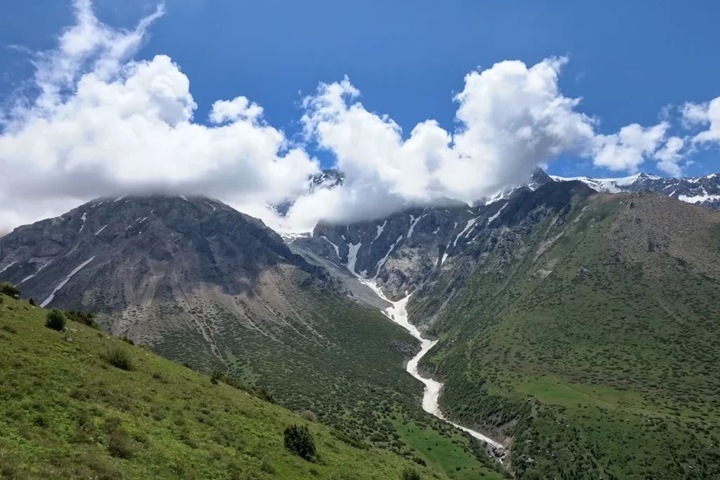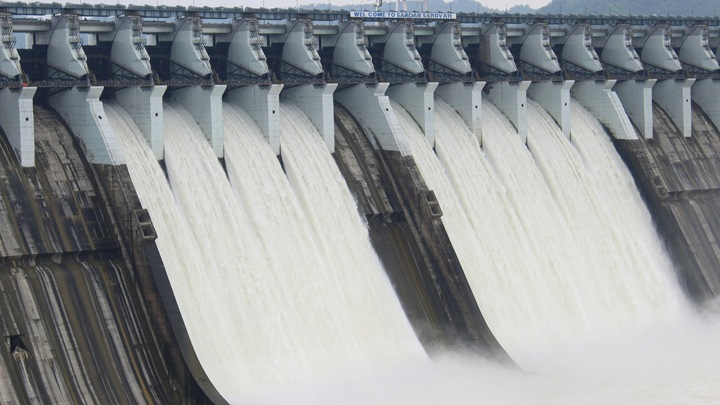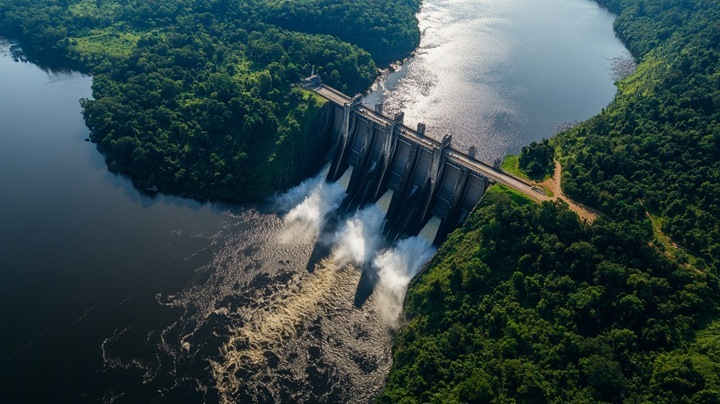UNESCO: the future of the Western Tien Shan is under threat due to HPP projects
International experts are sounding the alarm: the nature of the Western Tien Shan is under serious threat – primarily due to the construction and design of numerous hydroelectric power plants (HPPs) capable of causing irreparable damage to the fragile ecosystems of the region.

The official report of the joint mission of the UNESCO World Heritage Center and the International Union for Conservation of Nature (IUCN), which took place in September 2024 and was devoted to studying the state of the unique UNESCO World Heritage Site “Western Tien Shan”, located on the territory of Kazakhstan, Kyrgyzstan and Uzbekistan, has been published.
The Western Tien Shan is the center of origin of many cultivated plants, including wild apple trees, apricots, walnuts and pistachios, the ancestors of modern varieties. Dozens of rare and endangered species of animals live here, such as the snow leopard, the marmot of the Menzbira, several species of vultures, as well as 20 endemic species of fish. The outstanding universal value of the Western Tien Shan, as UNESCO and IUCN experts found out, was threatened due to the disorderly placement of poorly justified industrial facilities, which casts doubt on the ability of the three Central Asian states to ensure the long-term preservation of their heritage.
The main source of concern for experts were hydropower development projects in the Western Tien Shan. In Kyrgyzstan, experts have come across plans to build a dam on the Chatkal River, right on the territory of the Besh-Aral Nature Reserve, which is a key part of the World Heritage Site. The mission’s recommendation was unequivocal and tough: not to start building any dams, regardless of their size, inside the protected area. UNESCO and IUCN experts stressed that even small reservoirs create stagnant zones with changing temperatures and low oxygen levels, which is detrimental to river fauna. In addition, any proposals to change the boundaries of heritage in order to “withdraw” land for the construction of hydroelectric power stations were called unacceptable.
The situation is no less serious in Kazakhstan, where a major project is planned to be implemented in the Sairam-Ugam National Park, which involves the construction of a cascade of dams and reservoirs. The UNESCO and IUCN mission concluded that the assessment of its environmental impact was carried out superficially and does not take into account all the risks. In particular, the effects on many species of birds, amphibians, as well as fish and insects, which are indicators of the health of the river ecosystem, have not been studied. The transformation of a turbulent mountain river into a chain of stagnant reservoirs will be a disaster for species adapted to running water.
Experts also questioned the economic justification of the Kazakhstan project, pointing out that its size is dictated primarily by the needs of electricity generation, and not by the stated goal of providing the population with drinking water. The report emphasizes that projects focused exclusively on water supply would have a much smaller scale and, accordingly, would have a less destructive impact on nature. The position of the UNESCO World Heritage Committee is clear: The construction of dams with large reservoirs is incompatible with the status of a heritage site. Dams create insurmountable barriers to the migration of fish and other aquatic organisms, disrupting their life cycles. They change the natural hydrological regime, trapping sediments and nutrients, which leads to the degradation of floodplain ecosystems downstream.
The threat is exacerbated by the cumulative effect. In addition to those already mentioned, several more hydroelectric power plants are planned in the region, including in Uzbekistan on the Chatkal and Pskov rivers. The construction of dams, even if they are located outside protected natural areas, fundamentally changes the life of rivers. Each new dam is another blow to the unified river network of the region. The UNESCO mission strongly recommended that the three countries draw up a single map of all current and planned hydropower projects in order to assess their cumulative impact and prevent a cascading environmental disaster that could undermine the integrity of the entire Western Tien Shan facility.
In addition to hydropower, mining is also a serious concern. The report notes that gold exploration has already led to significant land degradation along the Chatkal River in Kyrgyzstan. Satellite images show completely destroyed sections of the river valley, backfilled channels and heavy water pollution. These actions directly contradict the “principle of inadmissibility” of conducting extractive activities in the territories of the World Heritage Site, which is supported by UNESCO.
The final verdict of the international mission sounds like a last warning. The fate of the unique natural heritage of Central Asia hangs in the balance. The Governments of Kazakhstan, Kyrgyzstan and Uzbekistan face a choice: to follow the path of short-term economic benefits, risking losing priceless natural complexes forever, or to listen to the voice of the world community and make a choice in favor of preserving the heritage that belongs to all mankind.
Alexander Eskendirov (Rivers.Help!)
Original (in Russian): ЮНЕСКО: будущее Западного Тянь-Шаня под угрозой из-за проектов ГЭС


